Чорнобиль

Abandoned site of the world’s worst nuclear accident

Chernobyl itself is a small town north of Kyiv, the centre of what was intended to be the world’s largest atomic power generation site, under the direction of the Soviet Union. Ten nuclear power stations were planned, but the project wasn’t half realised in 1986 when reactor number four exploded and went into meltdown, in the world’s worst nuclear accident. At the time of our visit 28 years later, the area was safe enough to see for a short time on a guided tour. The exclusion zone includes not just Chernobyl itself but the ghost city of Pripyat, former home to fifty thousand plant workers and their families.
We booked a day tour from Kyiv, and with an early start on a little bus we reached the first checkpoint after a couple of hours. As well as getting closer to the entombed reactor than I had thought we would, we also saw the new arch under construction for longer term radiation shielding, the gigantic Duga-3 radio transmitter, and explored the ghost city of Pripyat plus a couple of little villages. Chernobyl town itself is still maintained, serving as a base for management of the exclusion zone.

At the first checkpoint to enter the Zone of Alienation, buses don’t stop much at Dytiatky these days. The exclusion zone extends to a thirty kilometre radius around the plant, and is being reclaimed by nature.
Chernobyl Nuclear Power Plant reactor number four is on the right hand side, hastily entombed in a concrete sarcophagus in 1986. Such was the intensity of the meltdown, that miners were mobilised to burrow underneath the reactor core and flood it with concrete, to prevent the nuclear lava from burning down into the earth. On the left is the New Safe Confinement arch (Novarka) being built as a more permanent radiation shield, waiting to be skidded over the top.


Cooling towers for the unfinished reactors five and six were abandoned half built. All scaffolding and cranes had been irradiated and was left behind.
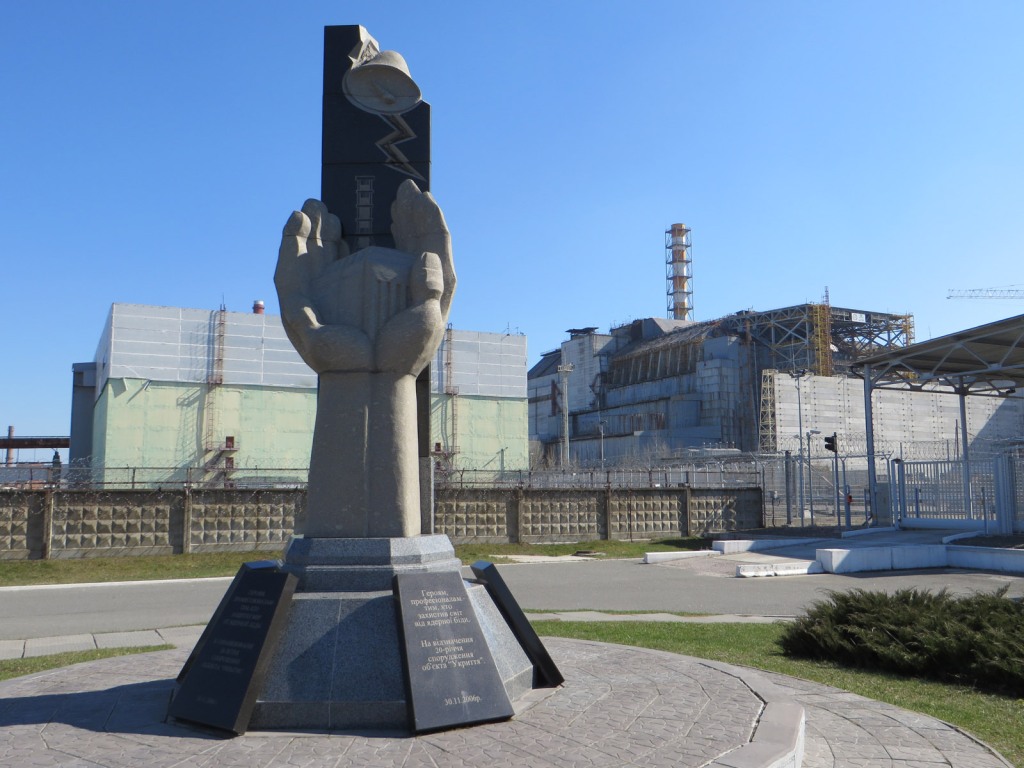
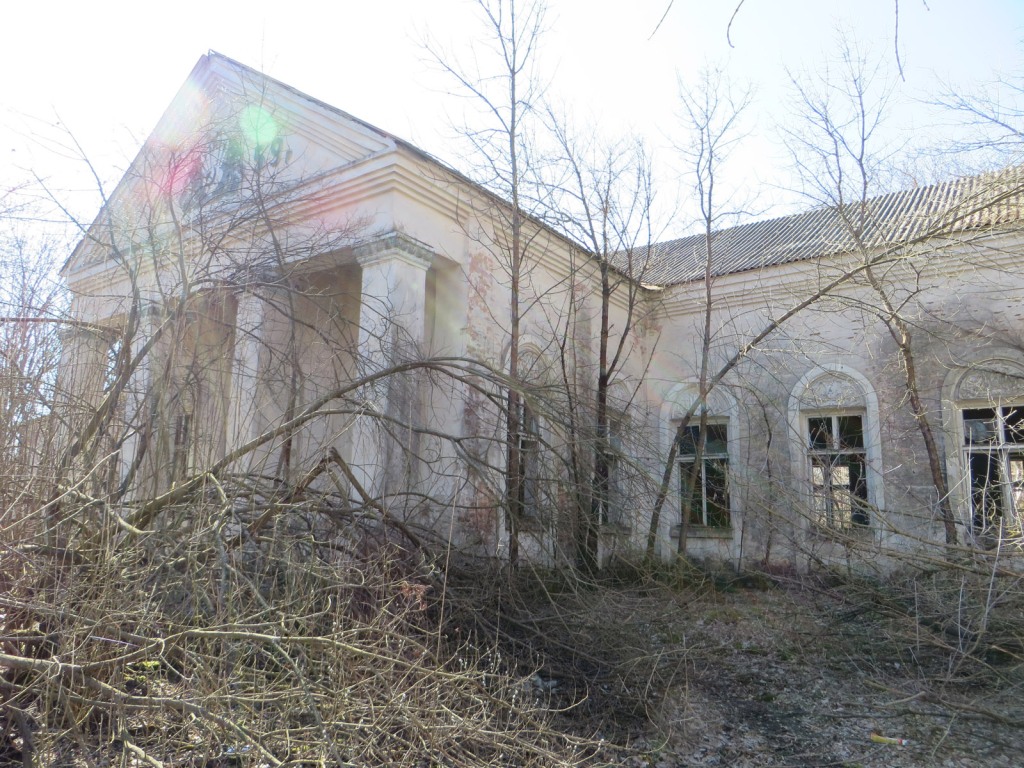
We stopped in a little village nearby, which had been all but consumed by the forest in the twenty-eight years since the disaster. This is the village hall.
The most powerful human evidence of the accident’s legacy is the ghost city of Pripyat. Built in 1970, it was abandoned in 1986, a few days after the disaster. This sign is one of the enduring icons of the city.
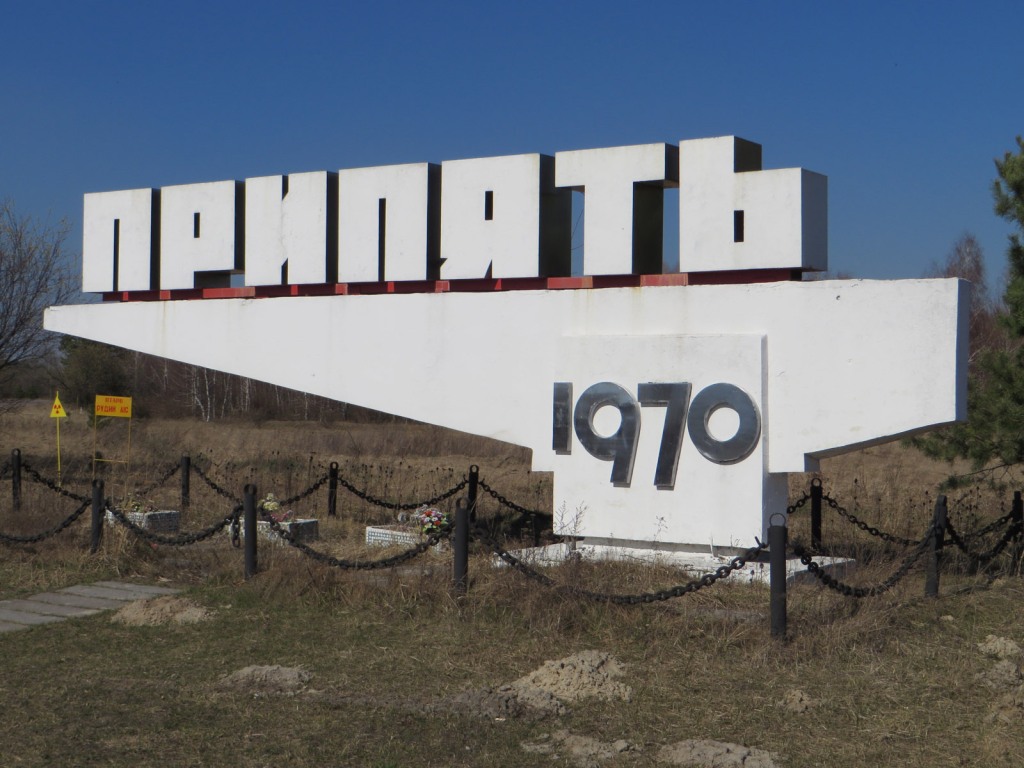
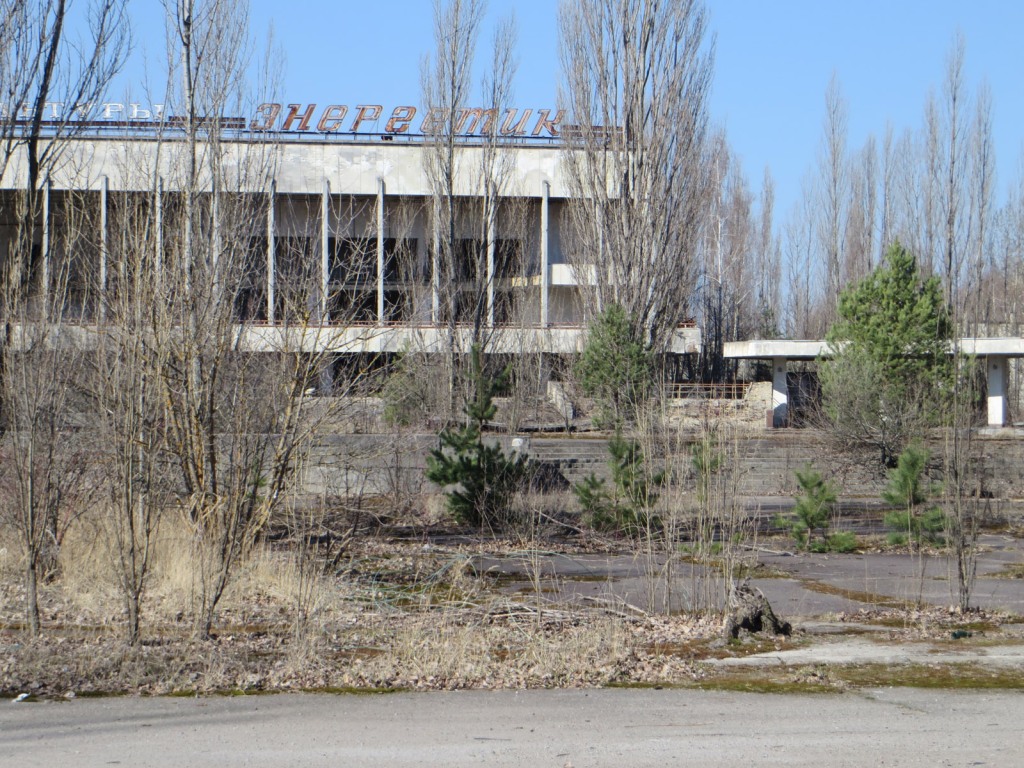
The central square in Pripyat still has faded signage on top of the buildings, hotels and restaurants. This one says “Energetic”.
Hotel Polissya stands forlornly at the northern edge of the square. With our Geiger counters, we quickly learned not to step on the moss if we could help it.
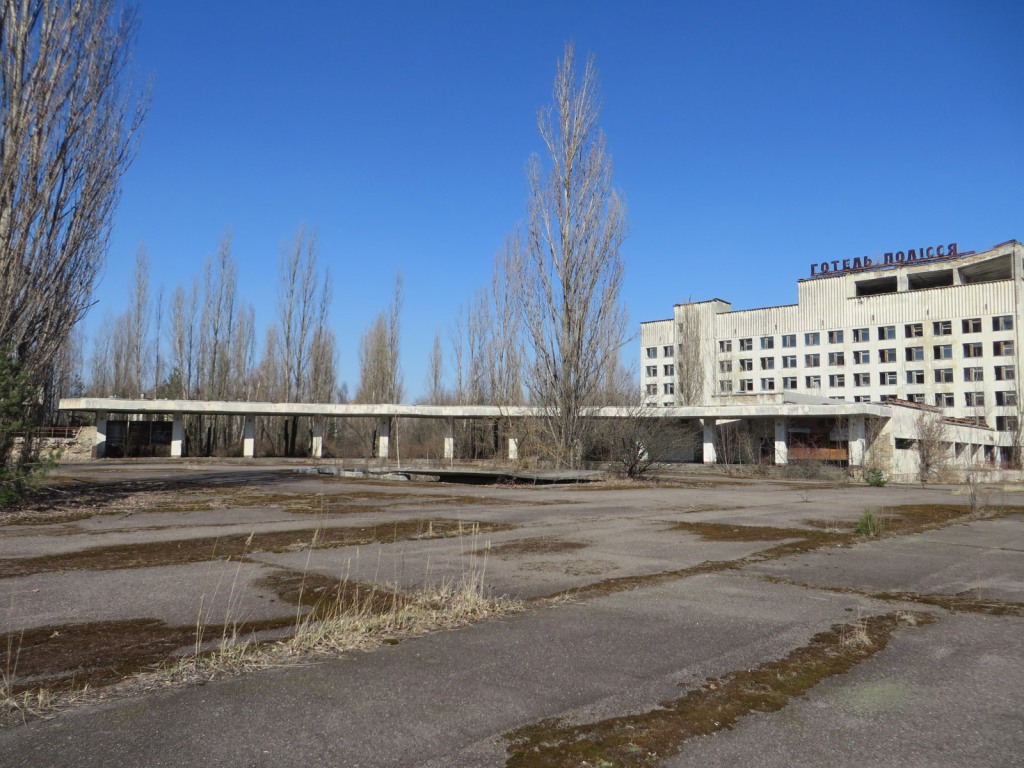
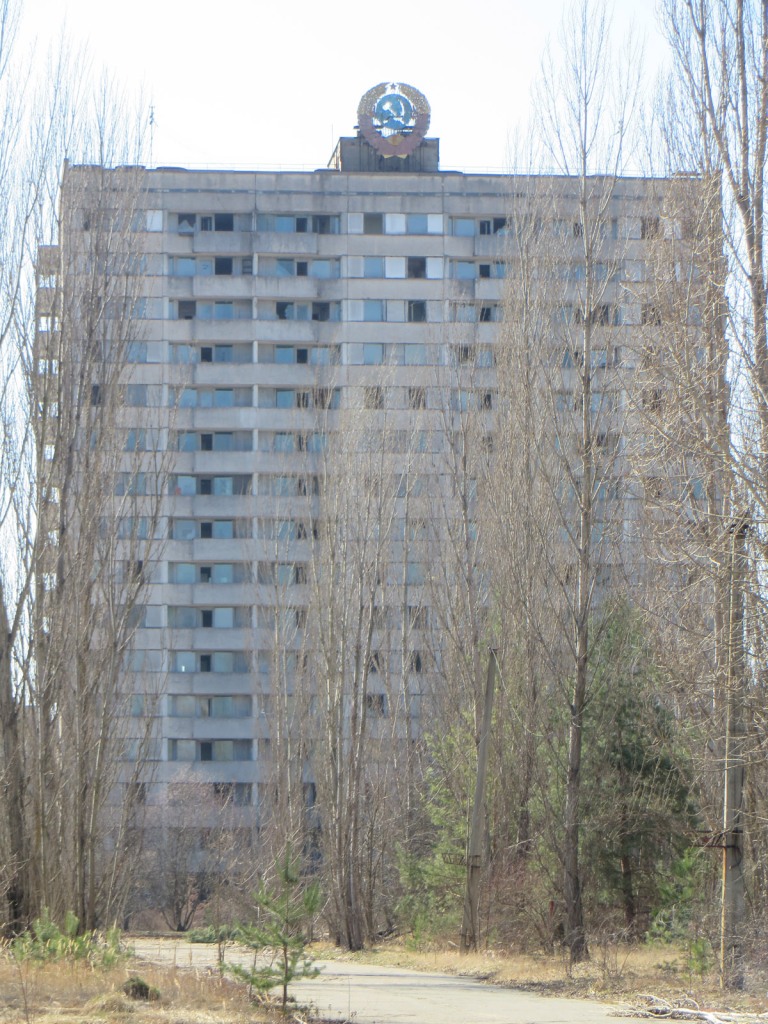
A Soviet apartment block still bearing the state emblem of the USSR looms over the city. Following the evacuation, the buildings were raided and ransacked over the years, despite the security of the exclusion zone.
Dodgems in the Pripyat fairground sit where they were left, as the rubber perishes beneath and the rink rusts away around them.
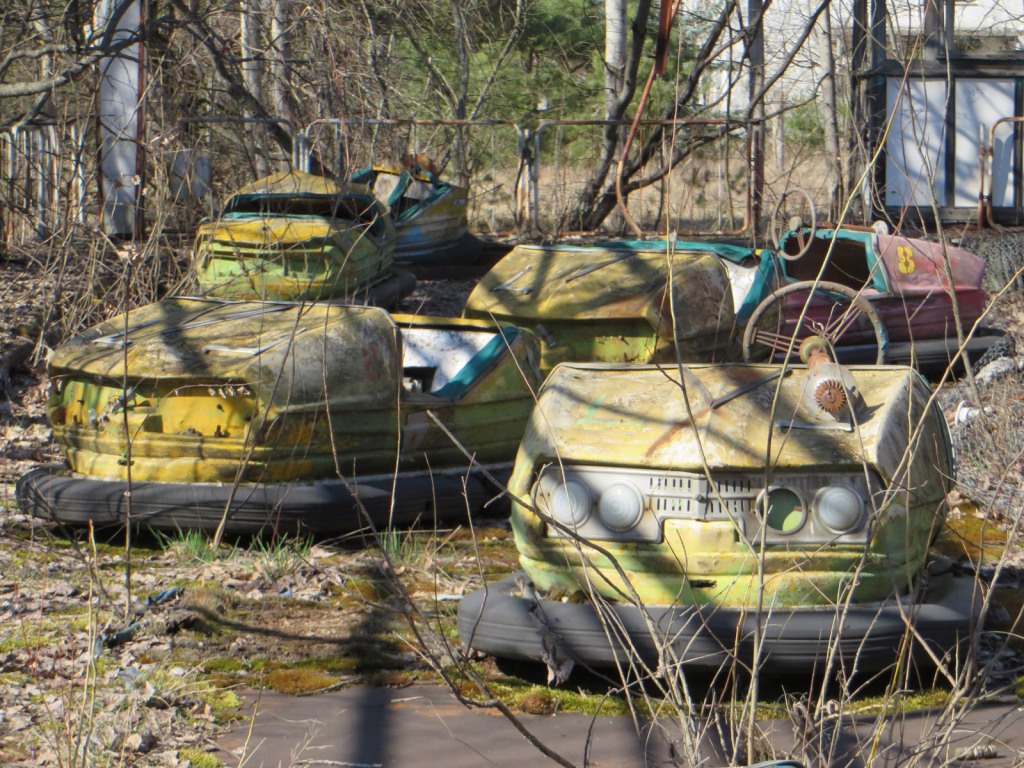
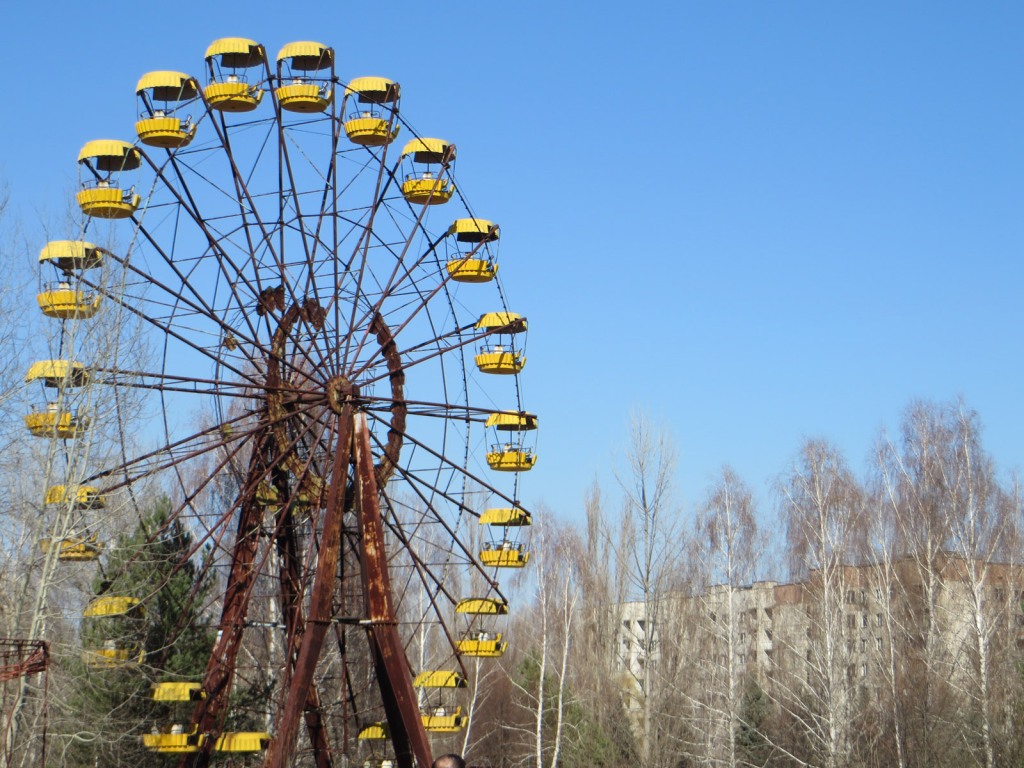
Pripyat’s Ferris wheel is probably the most potent symbol of the human cost at Chernobyl. The fairground hadn’t officially opened on the day of the accident, but was set in motion as a distraction to the population just before the evacuation began.
The sports stadium and football ground has twenty-eight years worth of growth on the pitch, making a kickabout a bit of a challenge.
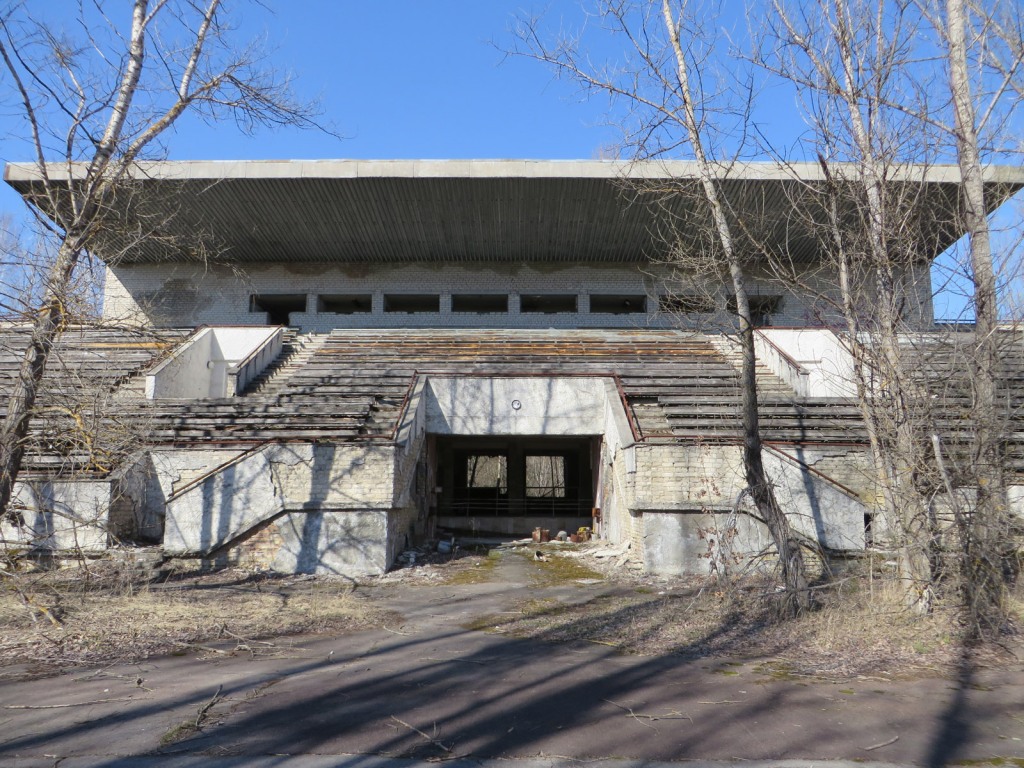
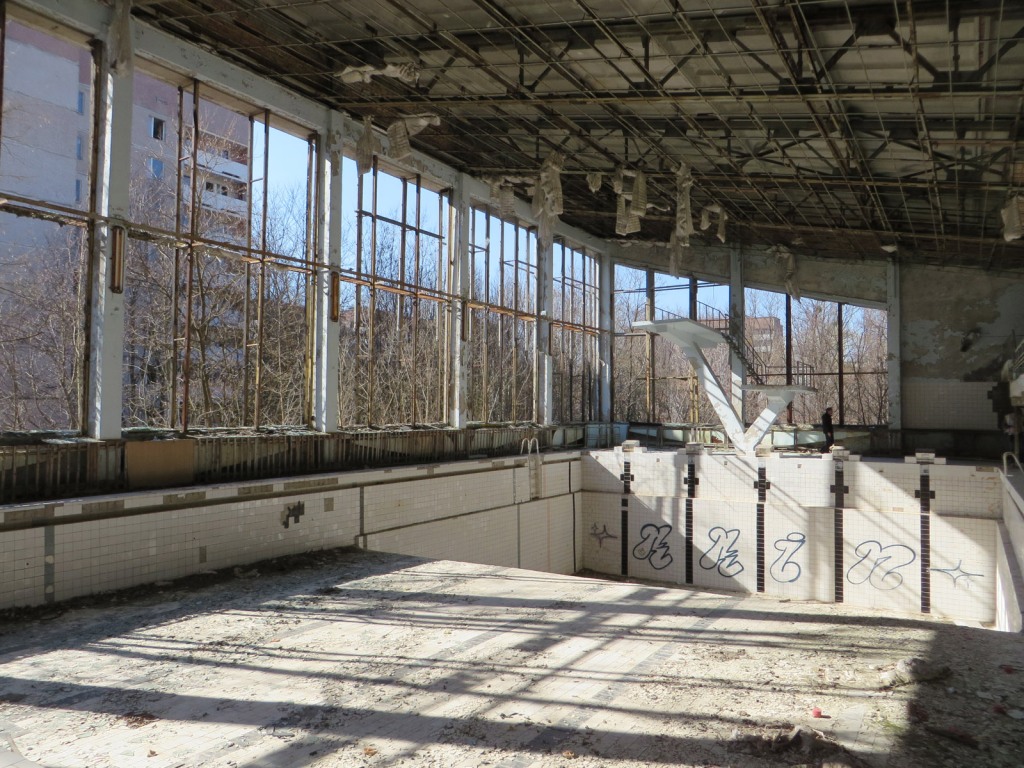
For me, the swimming pool was one of the eeriest places to explore, although I was surprised to learn that it actually remained in use well into the 1990s.
An abandoned basketball court in the sports centre building, where some of the gym-hall flooring has been ripped up.
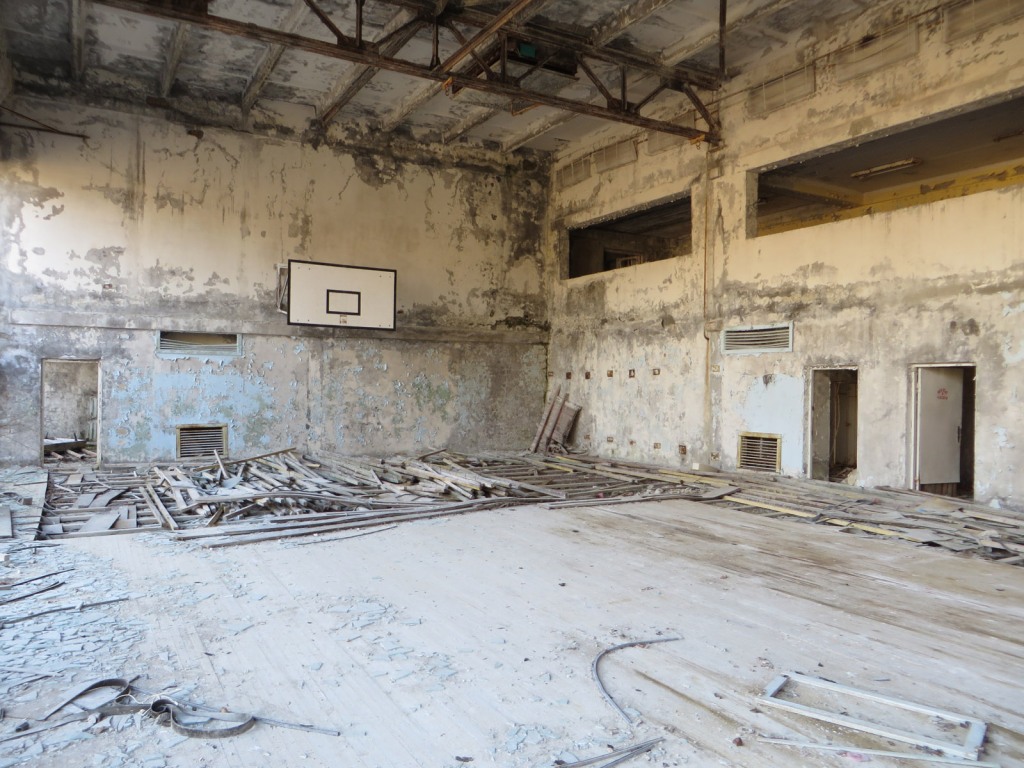
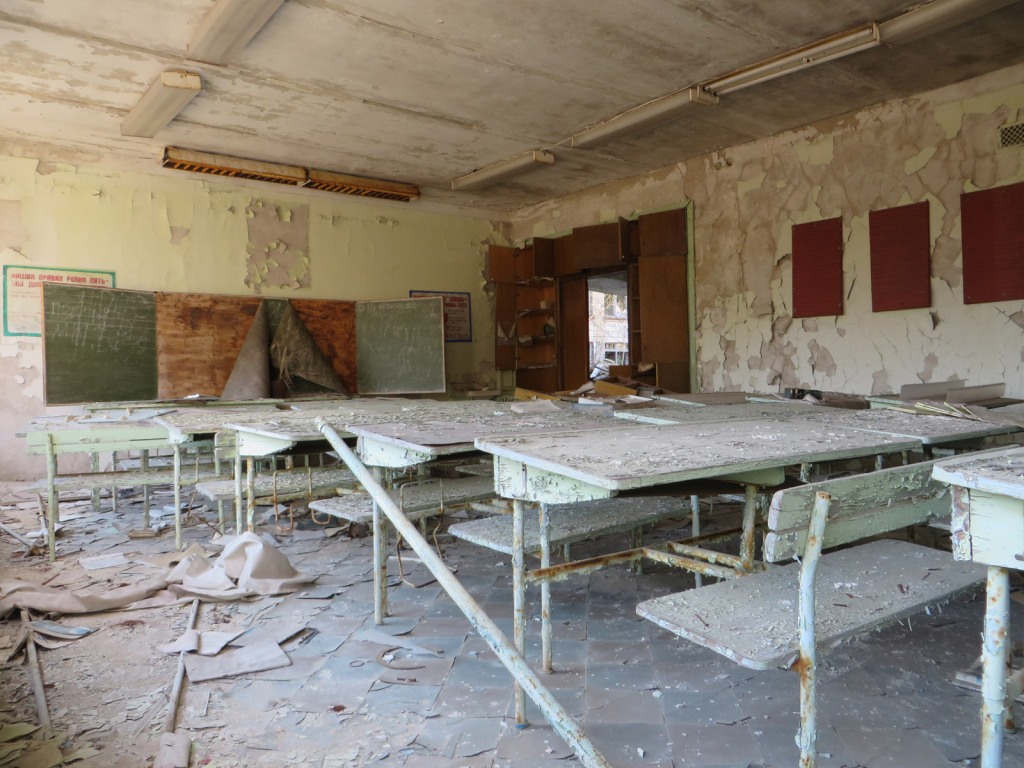
Classrooms remain equipped for use, with textbooks and toys strewn about the dusty desks.
This was scary, over the few years before our visit some buildings had begun to collapse, following years of weathering, freeze-thaw cycles and heavy snow. This is part of the same school as in the previous photo. Suffice to say, we did not go inside.

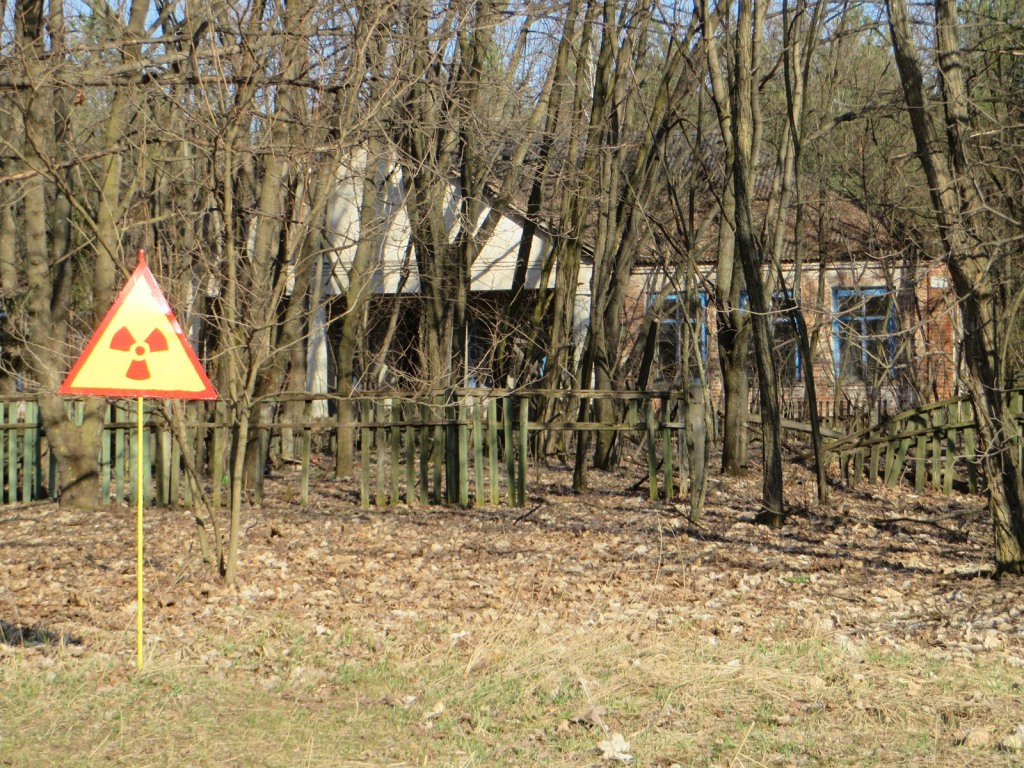
Outside of town, we stopped off at a nursery ominously marked with the radioactive fan, to show that the topsoil here had not been removed.
Inside the nursery, bunk beds, children’s books, toys, clothing and shoes all remained, scattered around the rooms. It felt more like an orphanage than a kindergarten to me.
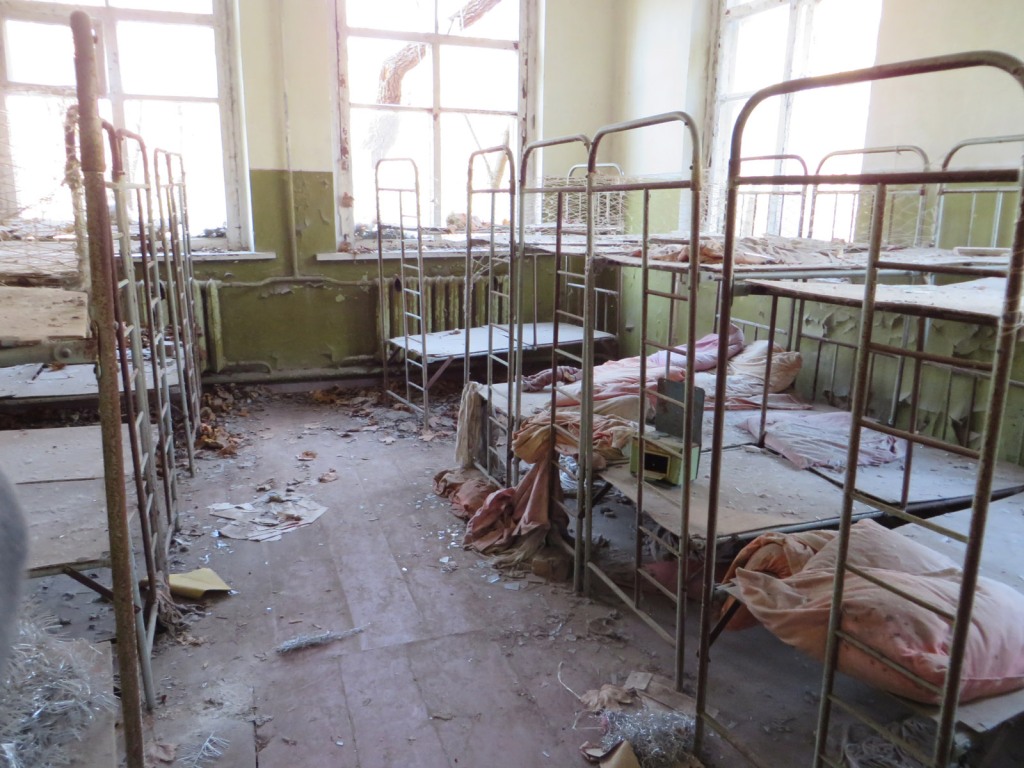
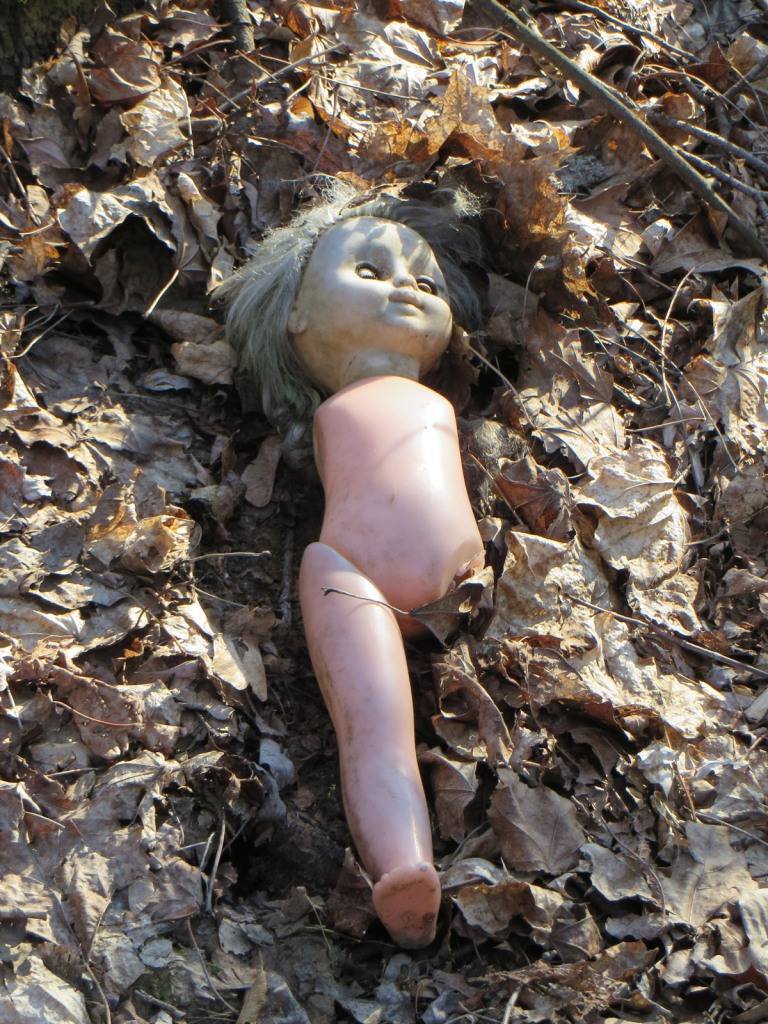
An irradiated dolly lies in the leaves outside the nursery. Nothing is permitted out of the exclusion zone, to prevent the spread of contaminated material.


Also known as Chernobyl-2 or Steel Yard by NATO, the array stands over five hundred feet tall, and the two sections combined are half a mile in length. It was incredibly impressive, my photos don’t do it justice.
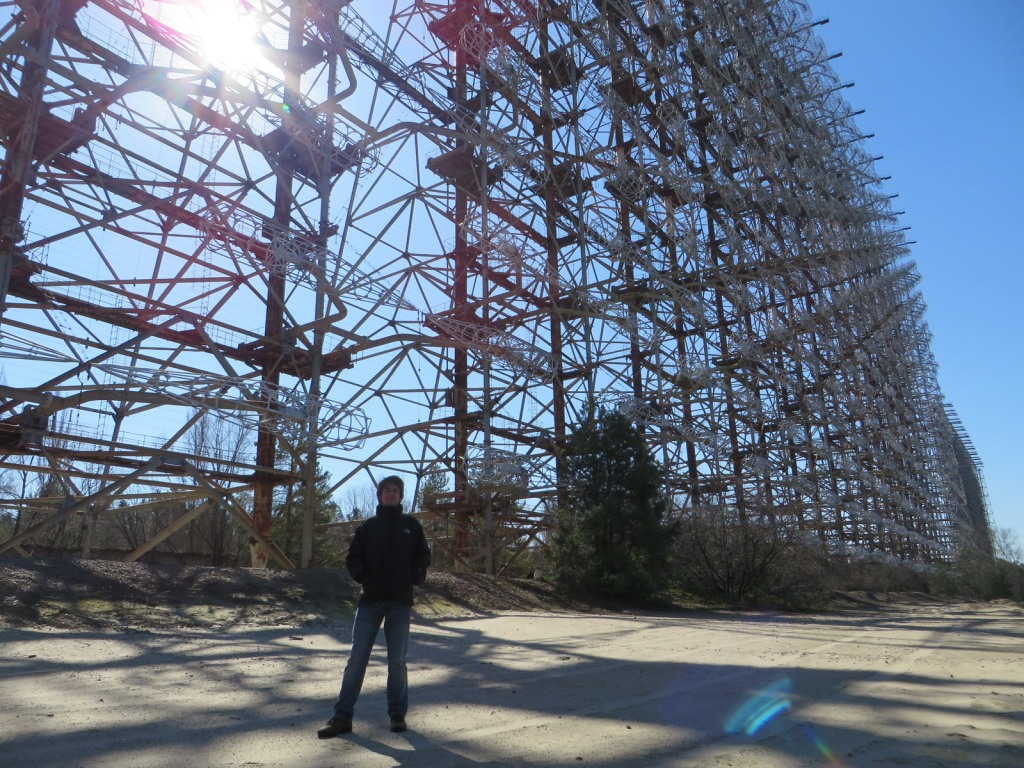

The human clock may have stopped at Chernobyl, but mother nature continues unabated, growing her way around any obstacle in her path. This tree is slowly swallowing up the steel handrails.
Back in Chernobyl, we stopped at the Monument to the Firefighters, the brave men who fought the flames in the reactor knowing it would spell their death. Their actions prevented a second explosion which could have rendered much of Europe uninhabitable. The monument is dedicated “to those that saved the world”.
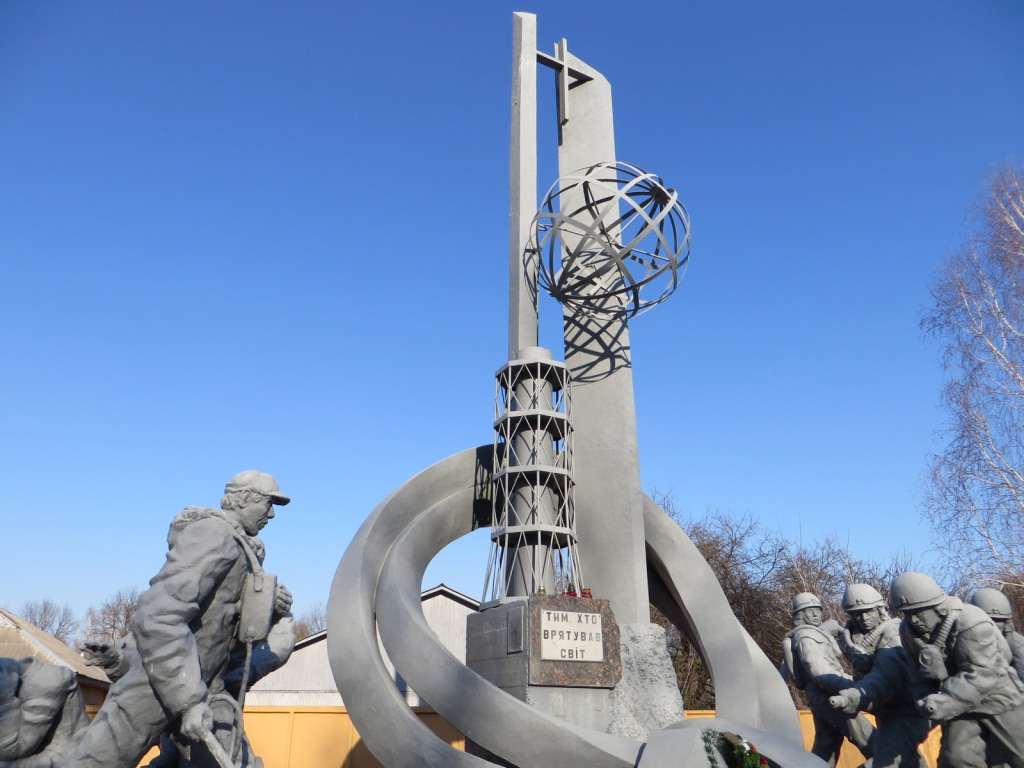
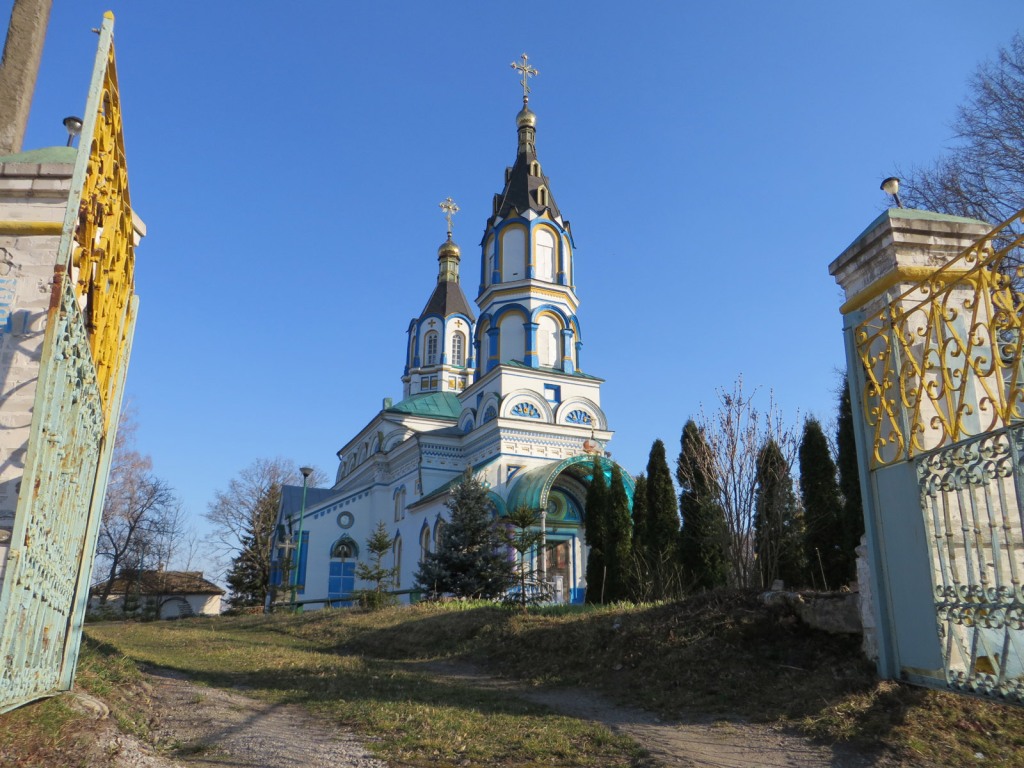
Like Pripyat, Chernobyl was also evacuated however a handful of older residents refused to leave. The town still has a population of a few hundred, and is maintained to an extent, including such beautiful buildings as this Orthodox church.
Created 2014 | Updated 2024
